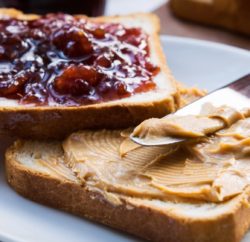With Halloween, the spookiest and arguably ookiest holiday of the year, behind us, I was shocked to learn that many people are totally ignorant of the long, storied and boring history of the holiday. While at a Halloween party last weekend, in between the mingling and making fun of the host’s home behind their back, I began telling the story to a slutty Elmer Fudd. As her eyes glazed over with interest, I noticed that she slowly took out her iPhone and began tweeting the story to her many followers (I assume). I was hit with a sudden epiphany. After the needed medical attention, I had an idea.
I could use this, my weekly column for UnSceneComedy.com, and you, my faithful and sexually attractive readers, to spread the long lost story of the first Halloween.
The first modern celebration of Halloween took place way back in 1952, begun as a marketing campaign for the now defunct “Excite-O Brand Candies & Liquorice” candy company to sell its products. They named the holiday Halloween as a way to advertise their newest candy: The Hallomars, which were exactly like Nabisco’s “Mallomars,” only instead of being filled with marshmallow, they were hollow.
Candy would be central to the holiday, the same way that Thanksgiving is based around turkey and Valentine’s Day is based around hastily purchased Pablo Neruda poetry books because the bookstore had a whole display set up so they must be pretty good and everyone is buying one.
Inspired by the Coca-Cola company’s creation of Santa Claus (based on the original Norse tradition of Sinterklaas, a four-headed hobgoblin who punished wicked children with tepid animated Christmas specials), “Excite-O Brand Candies & Liquorice” company president Leopold Excite-O decided to create their own holiday mythology.
After weeks of rigorous research, they discovered a traditional holiday from the Land of Gaar (an ancient nation making up what is today Ireland, Wales, Denmark and parts of Portugal) in which candy was used as a deterrent against evil spirits, characters from popular movies and slutty animals. It was a perfect fit.
Excite-O co-opted some of the holiday’s tamer ideas (giving out candy, dressing up in costume), while downplaying its darker ones (mandatory clown sacrifice) and totally ignoring its downright bizarre ones (removing your underwear without taking off your pants while screaming out “Wowie Zowie!”).
The first modern Halloween was not a major success, as Excite-O did not properly advertised the holiday, which led to a number of children being chased by angry villagers with torches and pitchforks, unaware that they were simply wearing costumes. After a number of lengthy lawsuits and witch trials, Excite-O doubled down their efforts, promoting their holiday with a newfound rigor and drive.
By 1962, the holiday had become an American tradition, aided in part by the hit song “Monster Mash,” which was the biggest hit in America until Beatlemania hit two years later. Many people (erroneously) believed that the holiday had been celebrated for centuries. This was merely an illusion, as many older people did not want to feel left out, and simply lied and said that they had celebrated the holiday in their youth.
And although “Excite-O Brand Candies & Liquorice” closed their doors forever in 1969 (after an ill-fated attempt at marketing LSD-flavored candies at the children of hippies), their holiday lives on today as strongly as ever.








